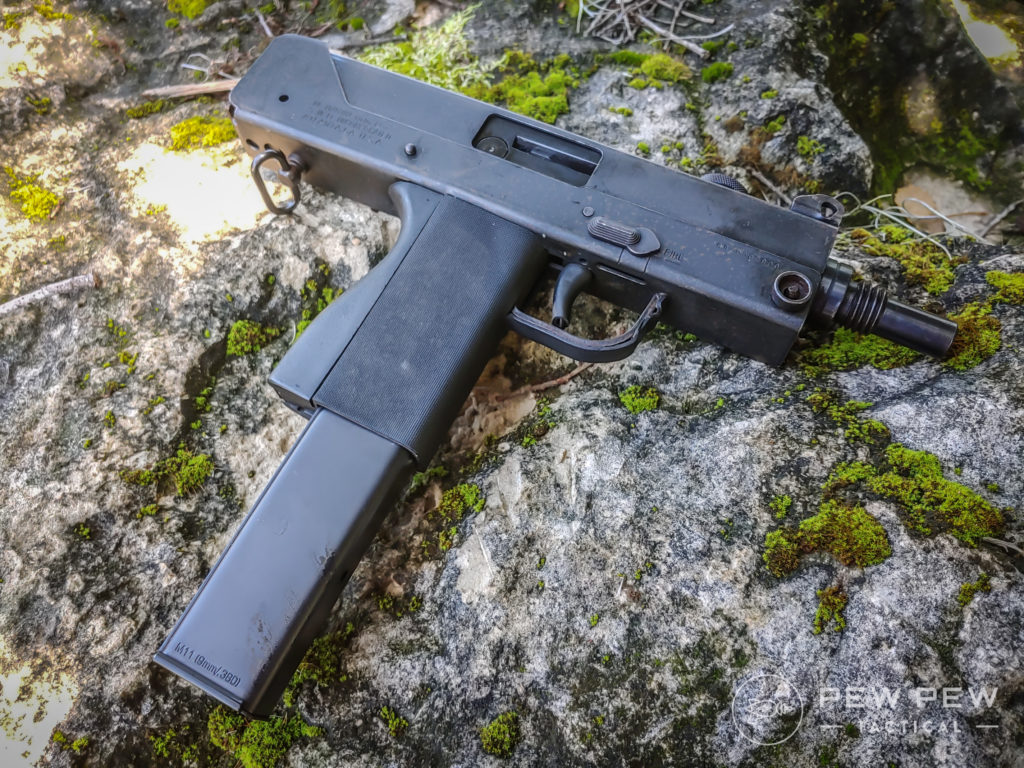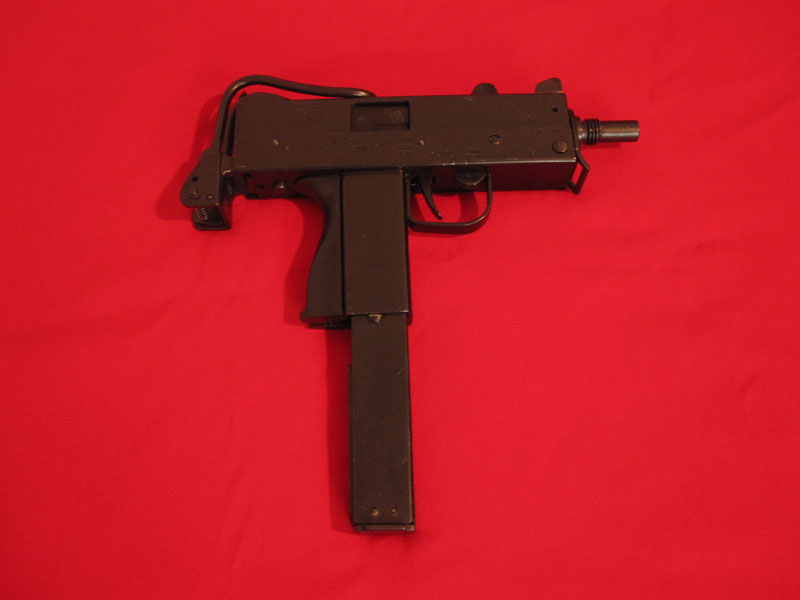You can fine-tune the location and duration of a clip in your project by moving the clip’s startpoint or endpoint, or an entire frame-range selection, in small increments at once. Choose one of the following methods, depending on how you like to work.
Help support our channel by clicking the link belowMan shoots the Mac 10 and Mac 11 machine guns. The MAC-10 (Military Armament Corporation Model 10, officially the M-10) is a compact, blowback operated machine pistol developed by Gordon B. It can be chambered in either.45 ACP or 9mm rounds. It is chambered in.45 ACP in-game. In-game, the MAC-10 is a moderately powerful machine pistol available to only the Terrorists. Shop for MAC/Cobray Model M10 parts with Numrich Gun Parts. We've been leading the industry since 1950. MAC-10 outlines MAC-10 templates MAC-10 CAD drawings MAC-10 blueprints MAC-10 line drawings MAC-10 signwriter drawings MAC-10 vinyl template MAC-10 clip art MAC-10 vinyl graphics MAC-10 foil template. MAC-10 bestickering MAC-10 belettering MAC-10 autobelettering MAC-10 fahrzeugbeschriftung MAC-10 autobeschriftung. The Ingram MAC-11 (Military Armament Corporation Model 11) is a subcompact machine pistol/submachine gun developed by American gun designer Gordon Ingram at the Military Armament Corporation (MAC) during the 1970s in Powder Springs, Georgia. The weapon is a sub-compact version of the Model 10 , and is chambered to fire the smaller.380 ACP round.This weapon is sometimes.
Using the fine-tuning controls:
Using this method extends or shortens a clip in one-frame increments.
Choose iMovie > Preferences, and then click Browser at the top of the preferences pane.
The iMovie menu appears in a light gray bar across the top of your computer screen.
Select “Show Fine Tuning controls.”
In the Project browser, move the pointer over a clip, and then click one of the blue fine-tuning (double-headed arrow) buttons that appear at either end of the clip.
An orange selection handle appears.
Drag the selection handle to increase or decrease the clip’s duration one frame at a time.
As you drag, an indicator (+1, +2, -1, and so on) appears to show you how many frames have been added or removed.
You can extend or shorten a maximum of one second at a time, which means up to 30 frames for 30 fps projects and up to 24 frames for 24 fps projects. To shorten or lengthen a clip by more than one second, repeat steps 3 and 4.
Using the Clip Trimmer:
Using this method extends or shortens a clip in intervals of one-tenth of a second.
In the Project browser, move the pointer over a video clip, and then choose Clip Trimmer from the Action pop-up menu (looks like a gear) that appears in the lower-left corner of the clip.
The Clip Trimmer appears, with the selected clip outlined in yellow. The dimmed frames are those from the original video clip that aren’t currently used in your project.
In the Clip Trimmer, do either of the following:
Drag the handles at either end of the yellow clip selection to set a new startpoint and endpoint.
Move the handles one frame at a time by placing the pointer near the handle that you want to adjust, and then holding down the Option key as you press the Left Arrow or Right Arrow key.
Move the entire yellow selection box to the left or right by pressing the Left Arrow or Right Arrow key, or by clicking within the box and dragging. Using this technique, you can change which video frames are selected without changing the duration of the selection.
Click Done.
Using fine-tuning on the fly:
In the Project browser, do any of the following to extend or shorten a clip. To extend a clip, there must be unused portions of the clip available:
Move the pointer near the end of the clip you want to adjust, and then hold down the Command and Option keys. When an orange selection handle appears, drag it.
Move the pointer near the end of the clip you want to adjust, and then hold down the Option key as you press the Right Arrow or Left Arrow key.
To move a selected frame range, press the Right Arrow or Left Arrow key to slide the frame range to the right or left.
| MAC-11 | |
|---|---|
The MAC-11A1 without a magazine and the stock folded | |
| Type | Machine pistol Submachine gun |
| Place of origin | United States |
| Service history | |
| In service | 1972–present |
| Used by | See Users |
| Production history | |
| Designer | Gordon Ingram[1] |
| Designed | 1972 prototype was in development in 1964 and 1965 |
| Manufacturer | Military Armament Corporation Cobray Company RPB, SWD Inc. Jersey Arms Leinad MasterPiece Arms |
| Produced | 1972–present |
| Variants | MAC-11A1 MAC-11/9 |
| Specifications | |
| Mass | 1.59 kg (3.50 lbs) |
| Length | 248 mm (531 mm stock extended) (9.76 in/20.90 in) |
| Barrel length | 129 mm |
| Cartridge | .380 ACP, 9x19mm Parabellum |
| Action | Straight Blowback |
| Rate of fire | 1200 /min[2] |
| Muzzle velocity | 980 ft/s |
| Effective firing range |
|
| Feed system | 16 or 32-round box magazine[1][4] |
| Sights | Iron sights |
The Ingram MAC-11 (Military Armament Corporation Model 11) is a subcompact machine pistol/submachine gun developed by American gun designer Gordon Ingram at the Military Armament Corporation (MAC) during the 1970s in Powder Springs, Georgia.[5][6] The weapon is a sub-compact version of the Model 10 (MAC-10), and is chambered to fire the smaller .380 ACP round.[6]
This weapon is sometimes confused with the Sylvia & Wayne Daniels M-11/9, its successor the Leinad PM-11, or the Vulcan M-11-9, both of which are later variants of the MAC chambered for 9 mm Luger Parabellum cartridge.[7][8] Cobray also made a .380 ACP variant called the M12.[9]
The Minnesota Bureau of Criminal Apprehension (BCA) considers MAC-11 variants such as the Leinad PM-11 to be part of the 'MAC-10 class pistol.'[10]
Design[edit]
Operation[edit]

Like the larger M-10, the M-11 has open sights with the rear pinhole sight welded to the receiver. These sights are for use with the folding stock, as using them without the stock is nearly useless because of the initial jump of the weapon due to its heavy, open-bolt design. The M-11A1 also has two safety features which are also found on the Model 10A1. The charging handle rotates to 90 degrees to lock the bolt in the forward position thus preventing the weapon from being cocked. The second safety is a slider which is pushed forward to lock the trigger, which in turn pins the bolt to the rear (cocked) position. This prevents the weapon from discharging even when dropped, which is not uncommon with an open-bolt design.

Performance[edit]

The rate of fire of the M-11A1 is one of the biggest complaints on the firearm. Listed as approximately 1,200 rpm (rounds per minute),[8] the MAC-11 is capable of emptying the entire 32-round magazine in less than two seconds, which many users view as a drawback.[11] Rate of fire will also vary depending on the weight of bullets used. The gun also has a selector switch that allows it to fire only one round at a time in the semi-automatic mode.
Noting the weapon's poor accuracy, in the 1970s International Association of Police Chiefs weapons researcher David Steele described the MAC series as 'fit only for combat in a phone booth.'[12]

The M-11 is the least common version in the MAC family of firearms. At the MAC-11's high cyclic rate, extreme trigger discipline is required to discharge short bursts, which are required for combat effectiveness. Without proper training, the natural tendency of the inexperienced shooter is to hold down the trigger, discharging the entire magazine in little more than two seconds, often with poor accuracy due to recoil.
Sound suppressor[edit]
A specific suppressor was developed for the MAC-11, which used wipes as baffles, instead of the reflex baffles that Mitchell Werbell III created for the MAC-10. Though wipes are less durable than reflex baffles, they had the advantage of proving quieter for the MAC-11. The suppressor is 224 mm in length and is covered with Nomex-A heat-resistant material.[1]
Manufacturers[edit]
MAC-type submachine guns and semi-automatic pistols were first manufactured by the Military Armament Corporation, and later by RPB Inc., Sylvia/Wayne Daniel Inc.,[13]Cobray, Jersey Arms, Leinad, MasterPiece Arms,[8] and Vulcan.
Users[edit]
- Israel
- South Korea
- Taiwan: Used by Special Forces
- United States
- Philippines:Used by Special Forces
- Venezuela: Known to be used by the Cuerpo de Investigaciones Científicas Penales y Criminalísticas (Scientific Penal and Criminal Investigations Corps).[14]
- Malaysia:Used by Special Actions Unit, Royal Malaysian Police Specific by the VIP bodyguard personnel team
See also[edit]
References[edit]
- ^ abcHogg, Ian (1989). Jane's Infantry Weapons 1989-90, 15th Edition. Jane's Information Group. p. 117. ISBN0-7106-0889-6.
- ^'MAC-11 RPM'.
- ^'MAC Ingram M10 / M11 (USA)'. Weapon.ge – Modern Firearms Encyclopedia. Retrieved 11 June 2011.
- ^'Operation and Maintenance Manual: Military Armament Corporation'(PDF). Military Armament Corporation. pp. 2, 5, 28.
- ^Frank Iannamico. The Mac Man: Gordon B. Ingram and His Submachine Guns. p. 103. ISBN978-0-9823918-1-5.
- ^ abJack Lewis (2004). Assault Weapons. Krause. p. 76.
- ^Jones, Richard (2009). Jane's Infantry Weapons 2009-2010. Jane's Information Group. p. 139. ISBN0-7106-2869-2.
- ^ abcRobert E. Walker (2012). Cartridges and Firearm Identification. CRC Press. pp. 216, 241, 322. ISBN1466502061.
- ^Jerry Lee (2011). The Gun Digest Book of Guns & Prices 2011. Gun Digest Books. p. 235. ISBN1440235430.
- ^Lou Raguse (14 January 2021). 'New warrants in Idd's case reveal car search and investigation of possible link to brother's case'. MSN News. Kare 11. Archived from the original on 14 January 2021. Retrieved 14 January 2021.
And they found a backpack on the passenger side that had ammunition and 'Leinad PM-11 high capacity pistol.' The BCA calls it 'a MAC-10 class pistol,'
- ^'Ingram MAC Model 10 / M10 and Model 11 / M11 submachine guns (USA)'. Official site.
- ^Jack Lewis (28 February 2011). Assault Weapons. Gun Digest Books. pp. 79–. ISBN1-4402-2400-5.
- ^Iannamico, Ian. 'Manufacturing History of Ingram-MAC Type Firearms'. Small Arms Review. Chipotle Publishing, LLC. 20 (1): 104.
- ^http://armamentresearch.com/early-colt-sp1-self-loading-rifle-in-venezuela/
Sources[edit]
- Randal Stepan, Nolan Wilson, Gary Reisewitz. Mac-10 Cookbook. Arkansas: Desert Publications, 1989.
External links[edit]
Extended Clip For Mac 10.10
| Wikimedia Commons has media related to MAC-11. |
Extended Clip For Mac 10.7
